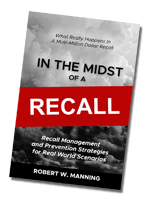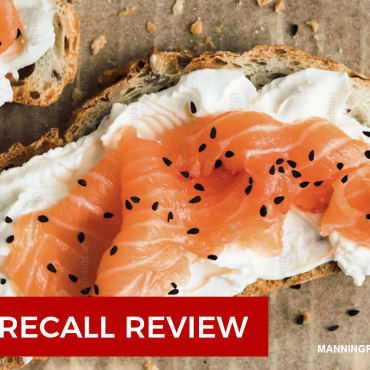RECALL PREVENTION
Metal Contamination
Foreign material contamination, specifically metal, is a frequent cause for products being held and destroyed internally, however in some cases the product gets released to the market and has to be
recalled. These products can cause multiple injuries, such as broken teeth, metal embedded into various parts of the body, and can cause choking.
Metal contamination can occur for various reasons, such as;
- Equipment wear and / or the result of breakdowns, lack of lubrication, or use of incompatible materials causing components to fail (i.e., chemicals)
- Repair using defective or inferior replacement parts (non-OEM Parts – Original Equipment Manufacturer).
- Improper use or failure to follow SOP’s (Standard Operating Procedures)
- Environmental conditions.
Since metal contamination can cause risk to consumers and cost your organization a significant amount of loss, It is important for food and other manufacturers to focus on prevention. Look for opportunities where metal can enter your production stream and determine appropriate prevention strategies.
Activities should include;
- Conduct regular mechanical inspections by your mechanical teams and have operators conduct pre-start up and shut down procedures, combined with inspections throughout their shifts.
- Review preventative maintenance records to ensure equipment is being maintained to the level set by the manufacturer.
- Review repair tools to make sure they cannot be the source of contamination.
- Have a review and clean-up procedure following maintenance activities and prior to production.
- Ensure high quality parts are purchased for equipment repair.
- Train new and seasoned employees on a regular basis (Operators, Maintenance, Sanitation, etc.)
- Have a communication and escalation procedure for findings.
- Follow all SOP’s (Standard Operating Procedures) and GMP’s (Good Manufacturing Practices).
- Determine if detection methods are required.
If your organization uses foreign material inspection or metal detection equipment, it is important to;
- Ensure all staff is trained on the requirements and use (Operators, Maintenance, and Management).
- Have the OEM conduct calibrations at set frequencies.
- Purchase required “test” equipment that operators and maintenance will use to make sure the equipment is functioning properly (also purchase spares, since they will get lost).
- Have a clear communication and escalation procedure in the case of detection or if the equipment is not operating properly.
- Make sure the equipment is clean and in good repair at all times.
- Determine your company’s procedure if the equipment is determined to be defective (this will happen and you still need to run production, therefore, what is your contingency plan?).
Although detection equipment has its use and can be very effective, your best approach is on PREVENTION.
Regulatory Guidance
FDA
“FDA’s Health Hazard Evaluation Board has supported regulatory action against products with metal fragments 0.3 inch (7 mm) to 1 inch (25 mm) in length.”
“In addition, foreign objects that are less than 0.3 inch (7 mm) may cause trauma or serious injury to persons in special risk groups, such as infants, surgery patients, and the elderly.
USDA
Poultry
- Prior to packaging – nuggets, patties, parts, etc. Testing shall be with a 1.5 mm 440 stainless steel strip.
- After packaging or packing – bologna, roasts, turkey ham, rolls, nuggets, patties, or diced product etc. Testing shall be with a 3.0 mm 440 stainless steel strip.
- In-line closed systems – Testing shall be with a flexible 3.0 mm 440 stainless steel test strip through a test port into the center of the detector field. Alternatively, a flexible 1.5 mm 440 stainless steel test strip inserted into the detector field at the outside edge of the pipeline may be used.
Red Meat
Graders shall ensure that metal detectors are capable of detecting stainless steel, ferrous and non-ferrous metals. The processor must state in their program the type of equipment, location, detection procedure and sensitivity levels.
For more on metal, see the FDA’s and USDA’s standards on Metal.”






Add Comment